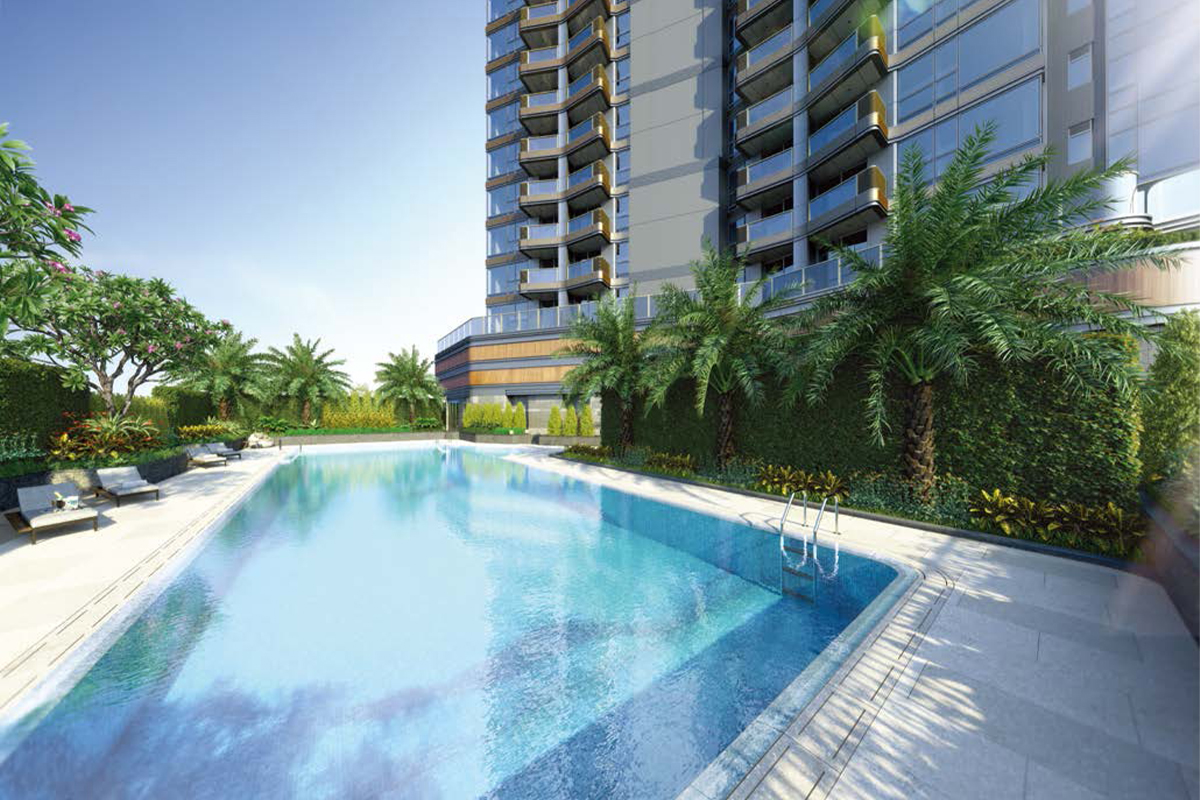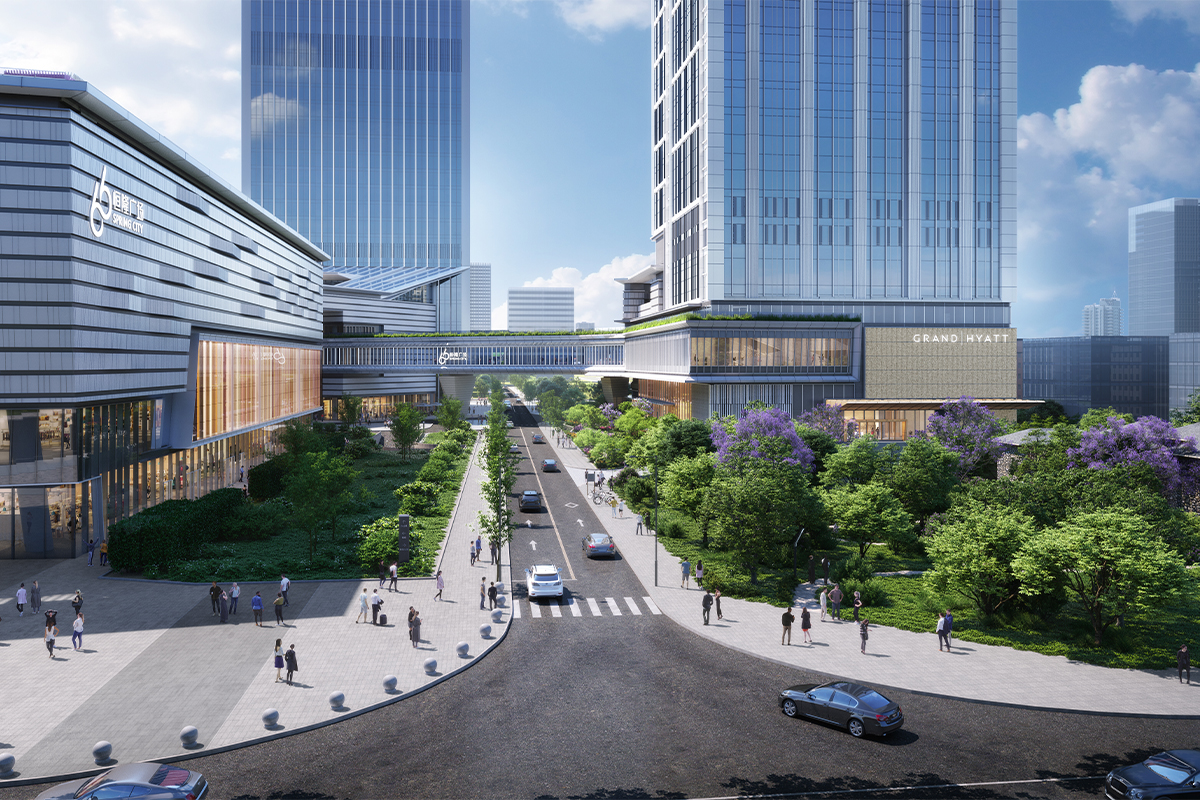We are committed to a comprehensive and proactive approach to managing climate adaptation and mitigation, focusing on reducing greenhouse gas emissions, enhancing resilience to climate impacts, and promoting sustainability across our operations. Our approach to building climate resilience has two aspects.
Climate Adaptation: We need to adapt to the climate change that is already underway by identifying and managing the risks it presents to our assets and operations.
Climate Mitigation: We need to make best efforts to reduce carbon emissions in our business, in order to alleviate our possible adverse impacts to the climate.
We are the first real estate company in Hong Kong and mainland China – and among the first globally – to have our near- and long-term net-zero targets endorsed under SBTi’s Corporate Net-Zero Standard. In 2024, Hang Lung completed our first comprehensive effort to examine scenarios, challenges and opportunities on our path to achieving net zero greenhouse gas emissions across our value chain. We undertook this exercise to gain a better understanding of our long-term challenges and opportunities in decarbonization, mindful of our commitment to achieving net zero by 2050. The paper is available here.
2030 Goal
Reduce carbon footprint in line with climate science.
2030 Targets
- Demonstrate best efforts to achieve 70% reduction of scopes 1 and 2 greenhouse gas emissions intensity (per m2), compared to 2018 baseline
- Build a nearly net zero carbon building
25 x 25 Sustainability Targets
- 40% cumulative reduction in GHG intensity (kg CO2e/m2) relative to 2018
- 18% cumulative reduction in electricity intensity (kWh/m2) relative to 2018
- 25% of our mainland China portfolio electricity demand met by renewable energy
- Wherever feasible exceed local regulations for the provision of parking spaces installed with EV charging facilities across our portfolio
- Demonstrate best efforts to achieve at least 10% reduction in embodied carbon intensity (kg CO2e/m2) for new development project that begin in 2022 or later, compared to typical practice in an equivalent building
- 15% reduction in GHG intensity (kg CO2e/m2) from tenants’ electricity consumption for our properties in mainland China, relative to 2018
- Complete technical analysis for climate adaptation measures for all properties
Carbon Pricing Analysis
Carbon pricing is expected to have a growing impact on the real estate sector in the coming years. Since 2021, we have closely tracked carbon pricing mechanisms that could affect our operations and financial performance. In 2022 and 2023, we conducted a carbon pricing scenario analysis, taking into account China-specific policies and plans, including the country’s Emissions Trading Scheme (ETS), to gain a deeper understanding of the potential implications for our business. We continue to take reference from this analysis.
As part of our scenario analysis, we have utilized carbon prices from six scenarios developed by the Network for Greening the Financial System (NGFS). These scenarios were applied to our emissions under both Business-as-Usual (BAU) and Science-Based Target (SBT) pathways, enabling us to estimate potential carbon costs in 2030 and 2050. Under BAU, the projected carbon costs are projected to increase significantly, ranging from HK$63 million to HK$1 billion in 2030, and from HK$969 million to HK$14 billion in 2050. In 2050, achieving our SBTs could reduce potential carbon costs by 95%, demonstrating the financial value of aligning with global climate goals. To reduce risks and pursue opportunities related to decarbonization, and taking into account equipment replacement and renovation schedule, the Group invests annually between HK$30 million and HK$60 million in energy efficiency measures across our operations.
Internal Carbon Price Pilot
To drive emission reduction, we have also piloted – and are continuing to develop – the use of internal carbon pricing (ICP) to inform our decision making, drive energy efficiency and low-carbon investments, and identify and seize low-carbon opportunities within the Group. Using shadow pricing, a hypothetical cost is applied to carbon emissions to evaluate their financial and environmental impacts on investments and operations. The shadow price is designed to escalate over time, with a modest increase up to 2030 based on anticipated carbon pricing in China and a steeper rise after 2030, reflecting internationally recognized climate scenarios. For example, while our 2024 shadow price was HK$82 per metric tonne of CO2e, this amount increases to HK$585 by 2030 and HK$1,106 by 2035. In this way, our ICP model can account for lower carbon prices today and the possibility of higher carbon prices in the future for a proper lifecycle analysis of long-lived capital investments such as chillers.
We began piloting ICP in Scope 1 and 2 decarbonization projects such as renewable energy procurement, using shadow pricing to assess the sensitivity of decisions to future carbon costs. These pilot projects allow us to validate the approach and refine its application before scaling ICP across more business areas, ensuring that carbon-related risks and opportunities are effectively integrated into our decision-making processes.





.png)